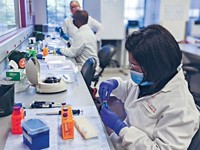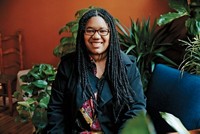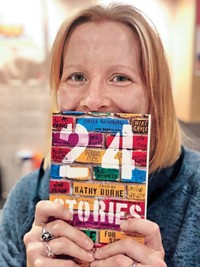Advertisement
Grab your lab coat. Let's get started
Welcome!
Welcome!
Create an account below to get 6 C&EN articles per month, receive newsletters and more - all free.
It seems this is your first time logging in online. Please enter the following information to continue.
As an ACS member you automatically get access to this site. All we need is few more details to create your reading experience.
Not you? Sign in with a different account.
Not you? Sign in with a different account.
ERROR 1
ERROR 1
ERROR 2
ERROR 2
ERROR 2
ERROR 2
ERROR 2
Password and Confirm password must match.
If you have an ACS member number, please enter it here so we can link this account to your membership. (optional)
ERROR 2
ACS values your privacy. By submitting your information, you are gaining access to C&EN and subscribing to our weekly newsletter. We use the information you provide to make your reading experience better, and we will never sell your data to third party members.
Food
Career Ladder
Career Ladder: Melissa Weller
Curiosity and a love of French cuisine drove this former fuel-cell engineer to become a master baker
by Alexandra A. Taylor
January 2, 2021
| A version of this story appeared in
Volume 99, Issue 1

1980s
Making cookies
Melissa Weller grew up baking cookies with her mother. “My mom baked with margarine because that was sort of the trend in the ’80s,” Weller says. In college, her parents encouraged her to do something science related, so she got a degree in chemical engineering. “But I also loved France, and I loved languages.” So she double majored in international relations and spent a year studying in France. “I was so enthralled with all of the different pastries and how good they were, and I think the science part of me wanted to know how to make it all from scratch,” she says. “I stuck with engineering, but I think my heart was always in cooking in France.”
1995
Engineering her dream job
Upon graduating, Weller received a job offer from Air Products and Chemicals, where she entered a career-development program and rotated among engineering assignments. “None of them were good fits,” she says. She enrolled in a course in San Francisco, where she became enthralled with the cuisine and decided she wanted to work in a restaurant. So in 1999, she quit her engineering job and went door to door to restaurants looking for a job. She ended up hostessing at two restaurants in San Francisco to make ends meet. “It was a pretty stark reality from having this comfortable engineering job with benefits and a 401(k) and holidays off to all of a sudden making hardly any money at all,” she says. She got nervous about her finances and decided to take a job in San Diego with the fuel-cell engine company Excelsis, where she worked for 2½ years. When the company announced it was closing its US location, it “was a blessing in disguise because I had a big severance package,” Weller says. She called up one of the most highly acclaimed restaurants in San Diego and offered to work without pay if it would teach her to cook. The restaurant accepted.

2003
Beginning with bread
Weller moved to New York City to attend the French Culinary Institute. After graduating, she worked for 2 years in the pastry kitchen at the Italian restaurant Babbo. She started experimenting with baking bread at home. “I’ve always said, ‘How do you make that?’ I’m sure it’s related to my chemical engineering background,” she says. Then she was hired as a dough pH tester at Sullivan Street Bakery, where the owner used large batches of dough with relatively little yeast. The theory was that “at a certain point, the pH would indicate when the dough was perfect for shaping into bread,” she says. Weller started out using a pH meter once per hour to measure and graph the pH and eventually worked her way up to become Sullivan Street’s first-ever woman baker.

Today
Mastering her craft
Weller has remained in New York City, working at restaurants such as Per Se and High Street on Hudson. She’s been drawn to the more-complex architectures of breads and pastries throughout her career. The New York Times named her sticky buns one of 2015’s top food dishes, and she was nominated for the James Beard Award for Outstanding Baker in 2016. Her cookbook, A Good Bake, was published in November 2020. Recipe writing came easily to her: “It’s just like what you learn to do when you’re writing up a lab report.” She says she thinks a lot about heat transfer and sometimes references research papers when she needs more information—for example, about the interaction of cornstarch, eggs, and sugar in pastry cream. Her engineering training is “so ingrained that I don’t necessarily even think about it so much anymore.”
Know a chemist with an interesting career path? Tell C&EN about it at cenm.ag/careerladder.
Check C&EN jobs for the latest job listings, as well as featured videos on what chemists do.





Join the conversation
Contact the reporter
Submit a Letter to the Editor for publication
Engage with us on Twitter